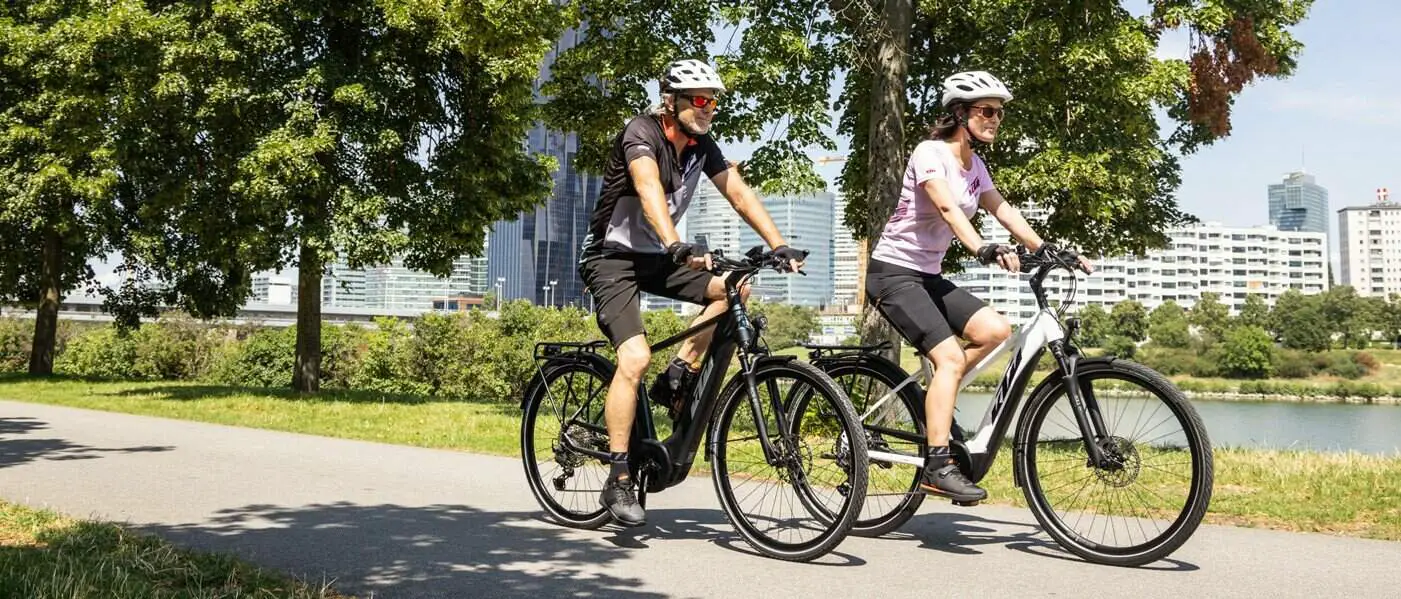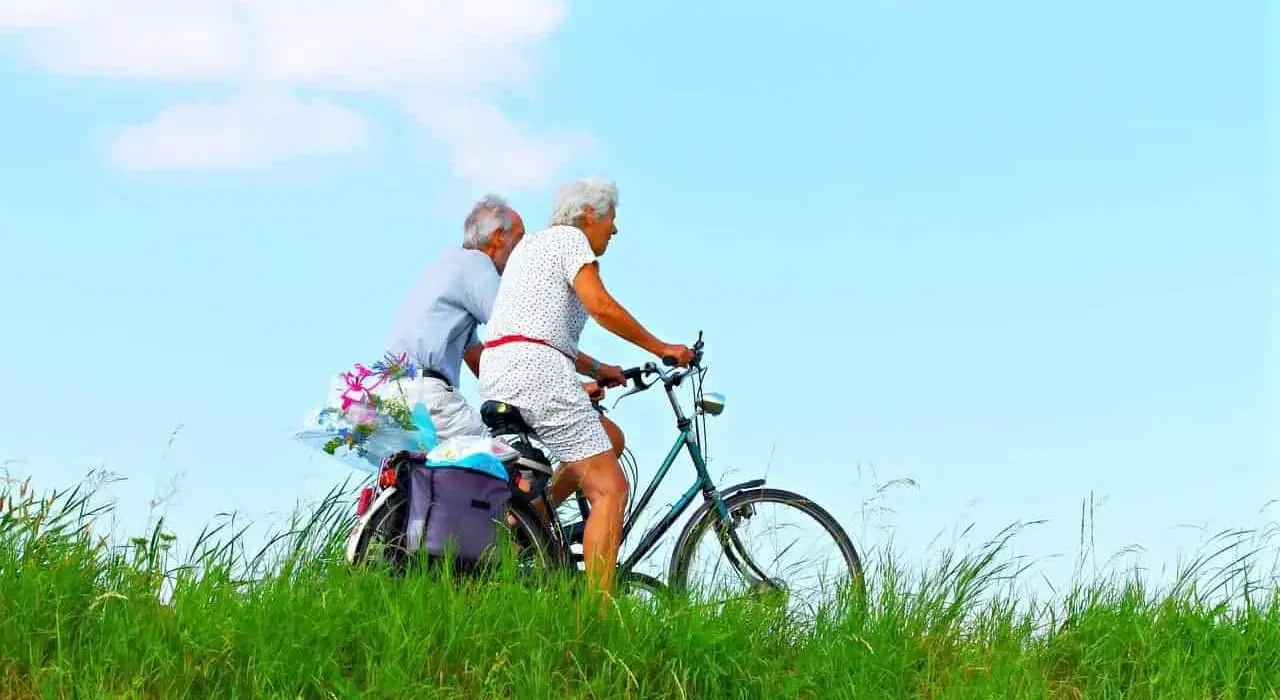Last Updated on June 2, 2022 by Igor Karni
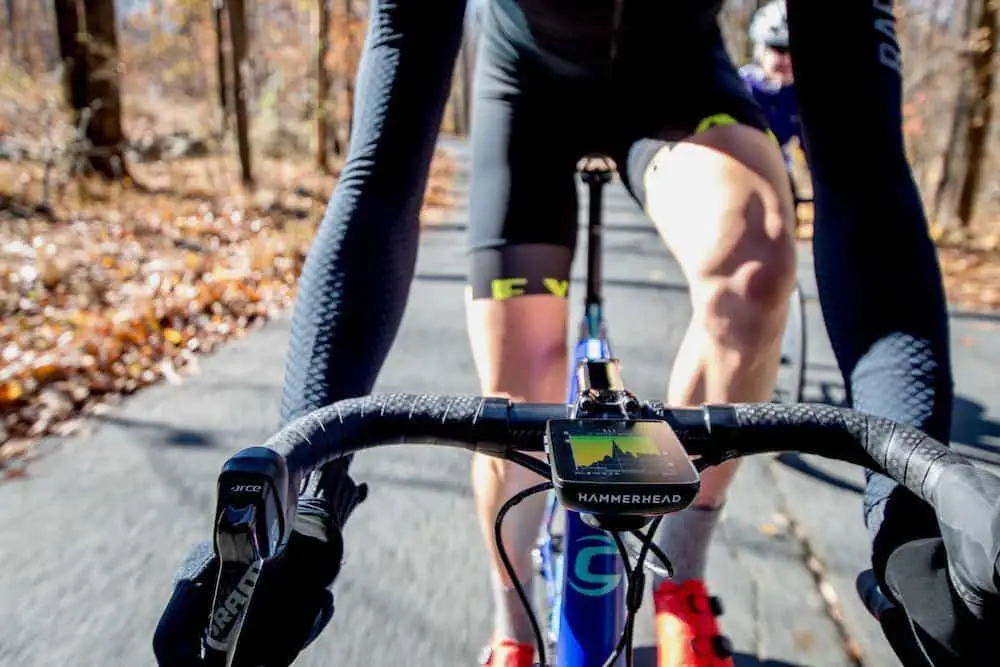
While riding an electric bicycle is beneficial in strengthening many of the body’s muscles, sometimes knee pain and soreness can be side effects.
Caused by various factors, such as improper e-Bike fit or overexertion, knee soreness can be frustrating to deal with.
However, there are many ways this type of pain can be managed and even avoided. This article will discuss the typical leading factors, as well as methods to mitigate knee pain caused by e-bike riding.
Common causes of knee pain while riding an e-bike
One of the most common areas of pain for e-bike riders is the knees, often caused by overuse and constant force exertion, which can negatively affect your muscles, tendons, and connective tissue.
Often, muscle tightness in certain areas of your lower half is the main culprit causing knee pain. Tendinitis (source), bursitis (source), patellofemoral syndrome (source), and chondromalacia patella (source) are a few knee conditions that are caused by repeated stress to the knee joints, as well as a muscular imbalance.
Repeated stress is typically caused by increased intensity and mileage at too fast a rate, and muscular imbalance is usually caused by improper posture or e-Bike positioning.
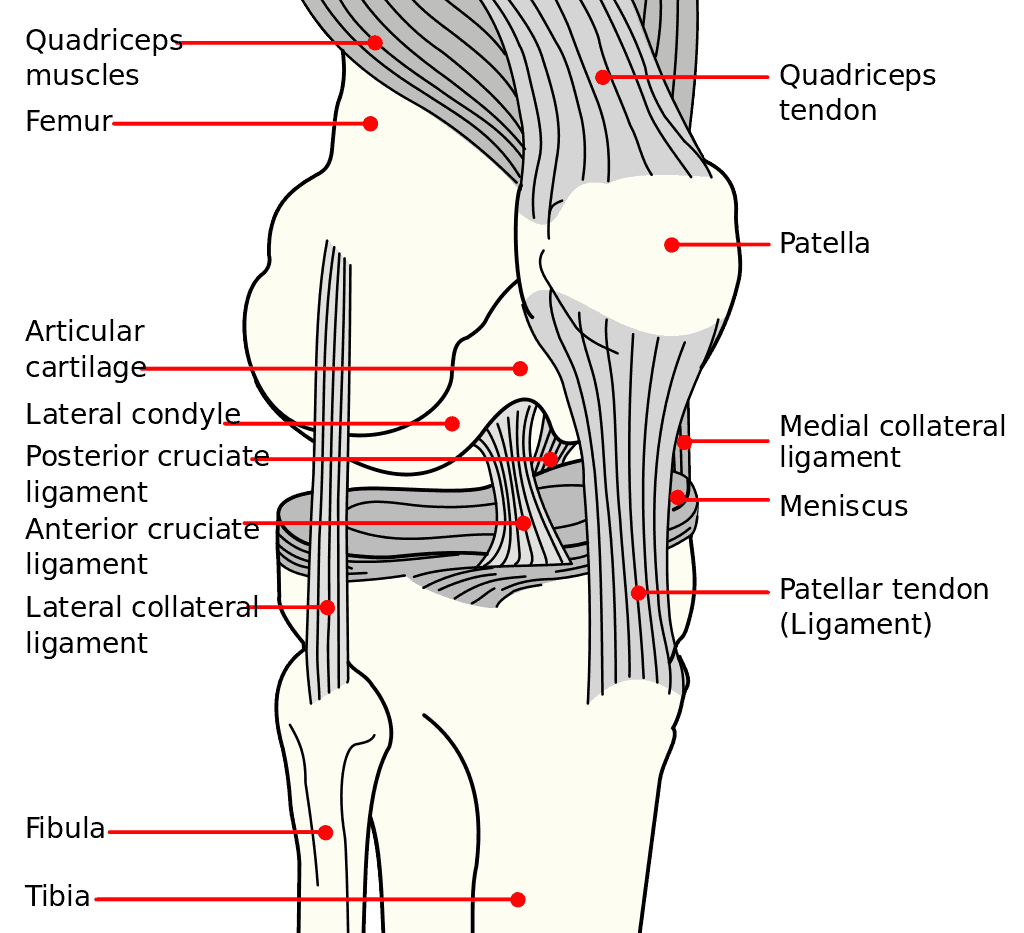
The areas of the knee that are usually most affected by cycling are the patella (kneecap – source) and the iliotibial (IT) band (which runs from above the hip joint down to the knee and are attached to the gluteal, hamstrings, and quadriceps muscles – source). Injuries related to overuse can lead to decreased flexibility, weakness, and chronic pain (source).
Often, the iliotibial (IT) band is affected when it over-tightens or pulls the kneecap out of line. A common cause of tight IT bands while riding an electric bicycle is when riders pull their knees towards the top tube of the frame. With the patella, any surrounding muscle tightness/weakness may cause the kneecap to move improperly while pedaling, which can result in the cartilage becoming inflamed or irritated.
When considering the anatomy of the knees, it is important to remember that the quadriceps muscles play a large role in the cycling motion, especially during the downward stroke. The gluteal (backside) and hip muscles are also powerhouses in charge of cycling, so improper positioning or stress on all these muscles can thus put undue stress on the knees.
Read also: Which muscles work when riding an electric bike? And, How does riding an e-bike change your body shape?
For example, if the quads are tight, the kneecap may be pulled in the wrong way while riding an e-bike. If you are riding your e-Bike frequently but have your knees improperly positioned, the repetitive movement can inflame the tendons in the knee and cause soreness and pain.
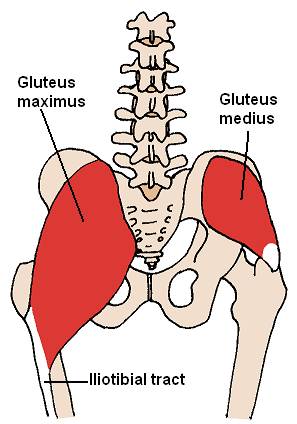
One of the leading factors to knee pain is typically caused by the gluteus medius (source). This is located towards the outside of the hip/pelvis and is in charge of stabilizing the hips and preventing your knees from rolling inwardly. So if one’s IT band is too tight, the gluteus medius will then also be tight, which may lead to knee pain.
Methods to manage knee pain before or during an e-bike ride
As mentioned, for the most part, knee pain can be treated and managed through slight alterations to one’s cycling routine, e-Bike adjustments, and a regular stretching and strengthening regimen.
If you find you are riding your e-bike at an intense level and are overtiring your body, try decreasing the intensity and volume at which you ride. Alternatively, the electric assistance on e-Bikes makes it much easier to customize your routine accordingly without sacrificing exercise: increase the pedal-assist if you start to feel tired during your ride.
As well, try to ride with less resistance and at a higher cadence (or, RPM). Riding at a consistent level, preferably on flat as opposed to uneven terrain, will be easier on your knees. Avoid standing while riding, as well, as this can put unnecessary pressure on your joints.
Read also: Can I ride an electric bicycle with knee problems or arthritis? And, Can I ride an electric bicycle with sciatica?
When it comes to stretching, some helpful knee stretches include leg extensions, lunges, leg press, and squats. These stretches will help to strengthen the muscles around your knees, thus making your joints stronger and lessening the risk of injury. You should also focus on strengthening the quadricep muscles, IT band, and gluteal muscles in order for your knees to benefit.
Since the IT band is the one at higher risk of becoming weaker and thus affecting your knees, be sure to focus on stretching this tendon. One good stretch is the standing IT band stretch. To do so:
- stand upright and cross your right leg in front of the left;
- lean over to the right side, as much as you can, to feel the stretch in your outer hip and knee: you can put your hand on a wall to help with balance while you do this stretch;
- hold for 30 seconds, and do the stretch three times on each side.
Please refer to Healthline for more benefits of an IT band and knee stretches.
While riding your e-Bike, you should also make sure you are keeping your knee over your foot throughout pedaling. Build up your distance, or mileage, at a gradual pace. This will help to ensure that you are not putting too much intense pressure on your body all at once and that your body has more time to adjust to your exercise routine accordingly.
And again, if you are finding that it’s difficult to build up your mileage and intensity gradually, be sure to make more use of the pedal-assist feature on your e-Bike.
Read also: How to use gears on an electric bike (mechanic and electric)? And, How to switch electric assistance levels on an e-bike?
You should also make sure to warm up properly before embarking on a higher-intensity e-Bike ride. Warm-ups help to ensure your circulation is flowing and lessens your risk of injury during your ride. Typically aim for around 15 minutes of warm-up, whether this is on your e-Bike at a low to moderate pace or off your e-Bike with appropriate stretches.
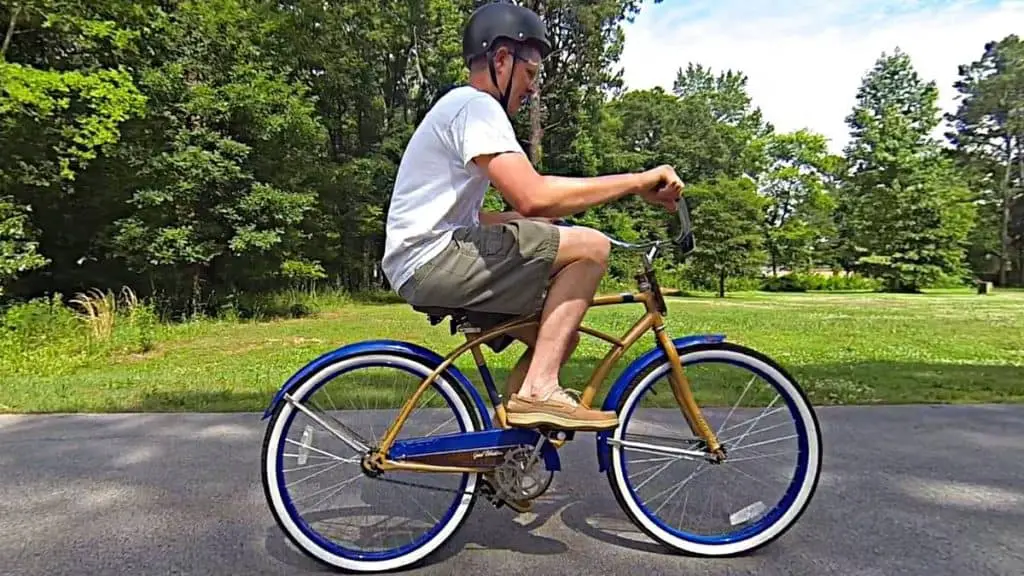
Adjusting your e-bike fit to eliminate knee pain
If you are dealing with knee pain of any kind, it is a good idea to look at how your e-Bike is positioned or fitted. The frame size, crank length, seat height and position, foot position, and handlebar position, and height are all factors that should be considered.
If you are feeling pain in the front of your knees (ie. the patella), it is typically linked to your quad muscles. Since your quads are attached to your shinbone (tibia) through the patella, via the patellar tendon, you may be pedaling at too high a force and intensity while riding.
If this is the case, you may need to adjust your crank length and saddle height. If your saddle is too low, your knee angle may be too tight when it gets to the top of the pedal stroke, which puts unnecessary pressure on your patella. This is the same case if your crank is too long for your leg length.
Having the saddle be positioned too far forward can also cause front knee pain. If your saddle is too low, try heightening it slightly: be sure not to position it too high, as your saddle should more or less be in line with your handlebars, in order to avoid bending too far forward. Pushing your seat back may also assist in decreasing pressure on the knees.
Read also: How to select the right electric bicycle size? And, Which electric bicycle to buy? Making your educated e-bike selection choice.
Pain on the lateral (outside) of the knees is usually related to IT band syndrome. Pedal cleats that are not properly aligned can be the culprit of exacerbated lateral knee pain. Consider adjusting your cleats so that your stance is balanced, ie. neither too far out nor too far in.
If you are experiencing pain behind the knees, which is typically less common, it is usually due to over-extension of the knee. The cause may be that your saddle is too high or too far back. Adjust your saddle slightly forward and down if this is the case.
However, if you find the adjustments are not making a difference, consider a professional e-Bike fit.
A few words in conclusion
Ultimately, knee pain can be avoided or managed by making simple adjustments and following regular stretching regimens to decrease the chance of injury. Of course, if you are finding your knee pain is not going away after making these adjustments, be sure to consult a healthcare professional.
Remember that e-Bikes are designed to help and give you a boost if you ever need it, which is especially important when you are feeling pain in any area of the body. Electric assistance allows it so that your joints and muscles do not have to compensate for any other part of your body that is otherwise lacking.
So, be sure to keep good posture and proper e-Bike positioning, as well as regularly strengthen the muscles in your legs, and your knees should be in good shape for when you ride!
Read also: Most common pains when riding an electric bicycle, and how to prevent and cure them.
Igor is a sustainable mobility and green energy advocate. His mission for Easy E-biking is to help make electric cycling simple, practical, and fun. Follow him on Facebook and LinkedIn.

